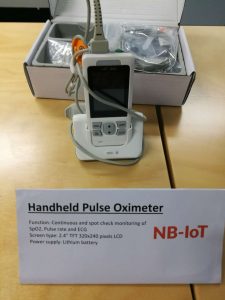Wearable devices to remotely manage patient chronic conditions are set to become availablefor the medical profession as part of a global first.
The move follows collaborative research between Griffith University, telecoms company Huawei Australia and Tonwo Health Clinic Technology.
Aimed to help patients better self manage health conditions such ashypertensionandcardiovascular disease and diabetes, the devices — which are set to become available this February – will use narrowband internet (NB-IoT) chips provided by Huawei Technology, which will send live data to an application platform.
“Both patients and doctors can view not only historical data to make a disease diagnosis but also manage the potential risks for other health conditions,” saysAssociate Professor Jing Sunfrom Griffith’sMenzies Health Institute Queensland (MenziesHIQ).
Associate Professor Sun and her team at MenziesHIQ have been involved in the development of a prototype of the wearable device and will be evaluating the data as part of a patient trial on the Gold Coast early next year.
Projected to save billions in dollars
“The potential for wearable devices as part of the Australian healthcare system when used as a self-care management for family and health-based monitoring, is projected to save billions in dollars for the healthcare system,” she says.
“It is expected that patients will be able to monitor their own blood pressure, glucose levels, BMI,heart rate, pulse oximeter and the condition of their heart.
“Meanwhile, a patient’s GP will have the ability to provide a patient with full remote monitoring, making all the required health checks and even being able to guide a patient on their own health check.
“Our NB-IoT real time medical devices are first in the world and are ready for mass production now,” says John Zeng, president of Tonwo Health Clinic Technology Pty Ltd.
“Following our research, we have five devices ready for launch: Blood pressure Monitor table, Blood pressure on arm, Handheld Pulse oximeter, Blood Glucose Meter, Body fat scale.
“The network in Australia will be provided byoperators to support the communication between the devices and NB-IoT.”
CEO of Huawei Australia, Xichu Zhao says: “The application of NB-IoT is very wide and is particularly suitable for medical and healthcare services.
“With our innovative IoT technology, Huawei is helping different partners on their road to success and achieving our role as the largest IoT incubator in Australia.
“IoT technology is particularly suitable for monitoring patients with chronic disease or for those undergoing rehabilitation. With the collaboration of the NB-IoT testing platform at James Cook University, we are delighted to be a part of this.
“The potential of NB-IoT in the healthcare industry is unlimited and we are expecting more exciting business models to come in the near future.”


